Search
Did you mean: Arachne?
Remove Ads
Advertisement
Summary 
Loading AI-generated summary based on World History Encyclopedia articles ...
Search Results
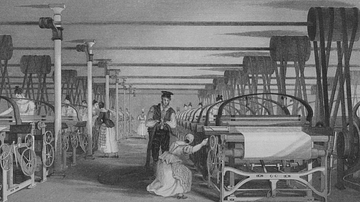
Article
The Textile Industry in the British Industrial Revolution
During the Industrial Revolution (1760-1840), textile production was transformed from a cottage industry to a highly mechanised one where workers were present only to make sure the carding, spinning, and weaving machines never stopped. Driven...
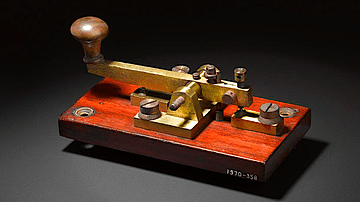
Definition
Electrical Telegraph
The electrical telegraph was invented in 1837 by William Fothergill Cook (1806-1879) and Charles Wheatstone (1802-1875) in England with parallel innovations being made by Samuel Morse (1791-1872) in the United States. The telegraph, once...
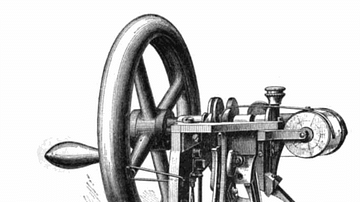
Image
Howe's Sewing Machine
An illustration of the lockstitch sewing machine, invented in 1844 by Elias Howe (1819-1867) in Cambridge, USA. The machine made much stronger fabrics than previously as the stitches did not unravel if the thread broke. The secret was the...
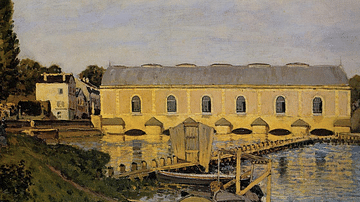
Image
The Machine at Marly by Sisley
An 1873 oil on canvas, The Machine at Marly, by Alfred Sisley (1839-1899), the Franco-British impressionist painter. This machine fascinated the artist, it was used to pump water to the magnificent gardens at Versailles. (Ny Carlsberg Glyptotek...
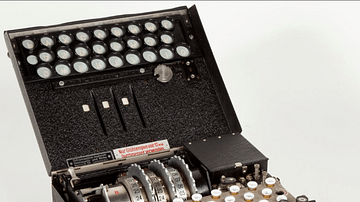
Image
Enigma Cypher Machine
An ENIGMA cypher machine, used by Nazi Germany during the Second World War to send coded communications. Unknown to the Germans, the Poles, French, and British deciphered the code. (Museum of Science and Technology, Milan)

Image
The Chemin de la Machine, Louveciennes by Sisley
An 1873 oil on canvas, The Chemin de la Machine, Louveciennes, by Alfred Sisley (1839-1899), the Franco-British impressionist painter. (Musée d'Orsay, Paris)
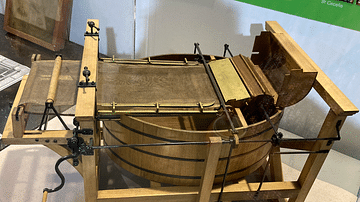
Image
Papermaking Machine
As with many inventions during the Industrial Revolution, the papermaking machine was something of a collaborative affair. This model is of one of the early machines developed by the Frenchman Nicholas Louis Robert (1761-1828) in 1799. The...
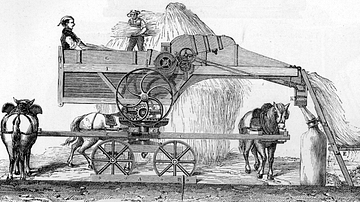
Image
Horse-Powered Threshing Machine
A French illustration of a horse-powered threshing machine. This machine, used to separate grain from the husk, was invented in 1787 by the Scotsman Andrew Meikle (1719-1811). The machine used a drum with beaters to remove the husk, first...

Image
The First Telegraph Machine
The first telegraph machine, invented in 1837 by William Fothergill Cook (1806-79) and Charles Wheatstone (1802-1875). The machine had only 20 letters, indicated in the message sent by the slight movement of two needles (from the machine’s...
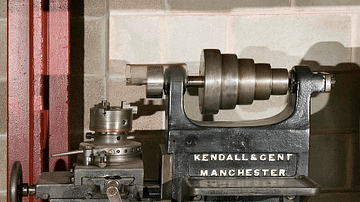
Image
Milling Machine
The milling machine was once thought to have been invented by Eli Whitney (already famous for his cotton gin) c. 1818, but as with many other inventions of the Industrial Revolution, the truth may be more complex regarding who invented what...